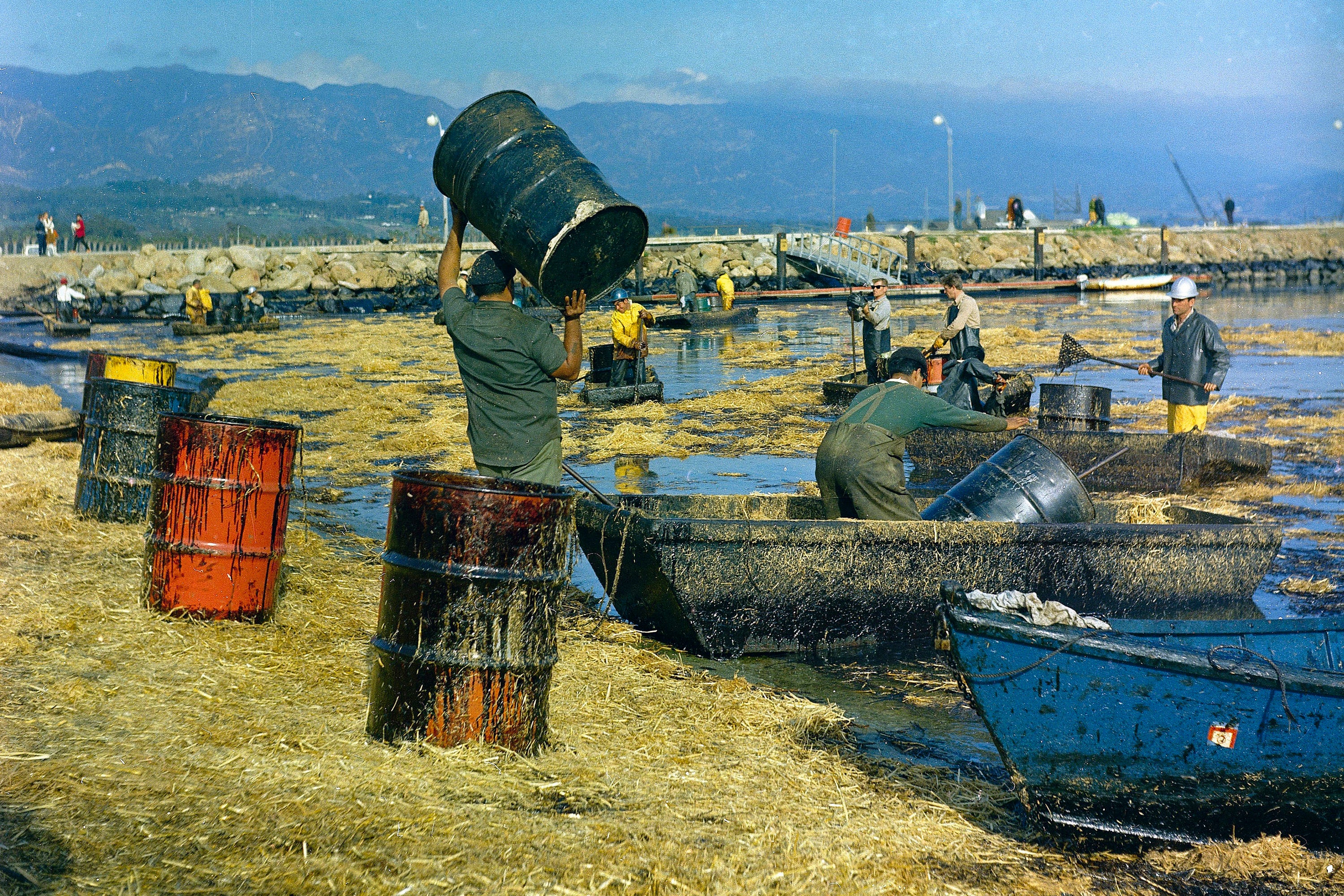California spill came 52 years after historic oil disaster
The weekend oil leak along the Southern California coast happened not far from the site of the catastrophe more than a generation ago that helped give rise to the modern environmental movement itself: the 1969 Santa Barbara oil spill

Your support helps us to tell the story
From reproductive rights to climate change to Big Tech, The Independent is on the ground when the story is developing. Whether it's investigating the financials of Elon Musk's pro-Trump PAC or producing our latest documentary, 'The A Word', which shines a light on the American women fighting for reproductive rights, we know how important it is to parse out the facts from the messaging.
At such a critical moment in US history, we need reporters on the ground. Your donation allows us to keep sending journalists to speak to both sides of the story.
The Independent is trusted by Americans across the entire political spectrum. And unlike many other quality news outlets, we choose not to lock Americans out of our reporting and analysis with paywalls. We believe quality journalism should be available to everyone, paid for by those who can afford it.
Your support makes all the difference.The weekend oil leak along the Southern California coast happened not far from the site of the catastrophe more than a generation ago that helped give rise to the modern environmental movement itself: the 1969 Santa Barbara spill.
That still ranks in the top tier of human-caused disasters in the United States and is the nation's third-largest oil spill, behind only the 2010 Deepwater Horizon and 1989 Exxon Valdez calamities.
During a 10-day period in early 1969, between about 3.5 million and 4.2 million gallons of crude spilled into the Santa Barbara Channel after a blowout six miles offshore on a Union Oil drilling platform. The disaster area was about 115 miles from the site of the 126,000-gallon spill over the weekend that fouled Huntington Beach, a celebrated surfing spot.
The Union Oil rig had been controversial since its inception, but local California communities hadn't been given any voice in decisions about drilling in federal waters. And corners were cut during the construction process: Regulations called for protective steel casing to extend at least 300 feet below the ocean floor, but the company obtained a waiver allowing it to install only 239 feet of casing.
In the aftermath of the spill, thousands of oil-coated birds perished and photos of the carnage on beaches were widely circulated in newspapers and magazines.
President Richard Nixon visited the site in March 1969 and told reporters, “It is sad that it was necessary that Santa Barbara should be the example that had to bring it to the attention of the American people."
That example — of communities left out of crucial decisions and corners cut to save time or money for large companies — garnered national attention and caused outrage. It added momentum to the movement to organize the first Earth Day the next year.
Wisconsin Sen. Gaylord Nelson, an early environmentalist, visited the Santa Barbara oil spill site and later said it inspired him to organize “a nationwide teach-in on the environment.”
The oil spill was not the only U.S. environmental crisis in the 1960s. The links between rampant overuse of the pesticide DDT and damaged ecosystems — including the dwindling population of bald eagles — were the subject of Rachel Carson's seminal 1962 book, “ Silent Spring."
A raft of far-reaching federal environmental legislation was enacted in the early 1970s, including the establishment of the Environmental Protection Agency (1970) and the passage of the Clean Air Act (1970) and Clean Water Act (1972).